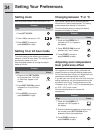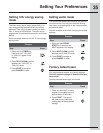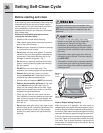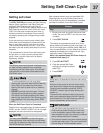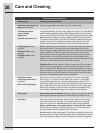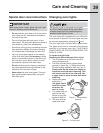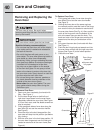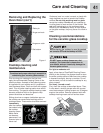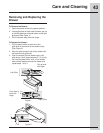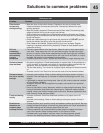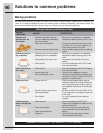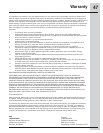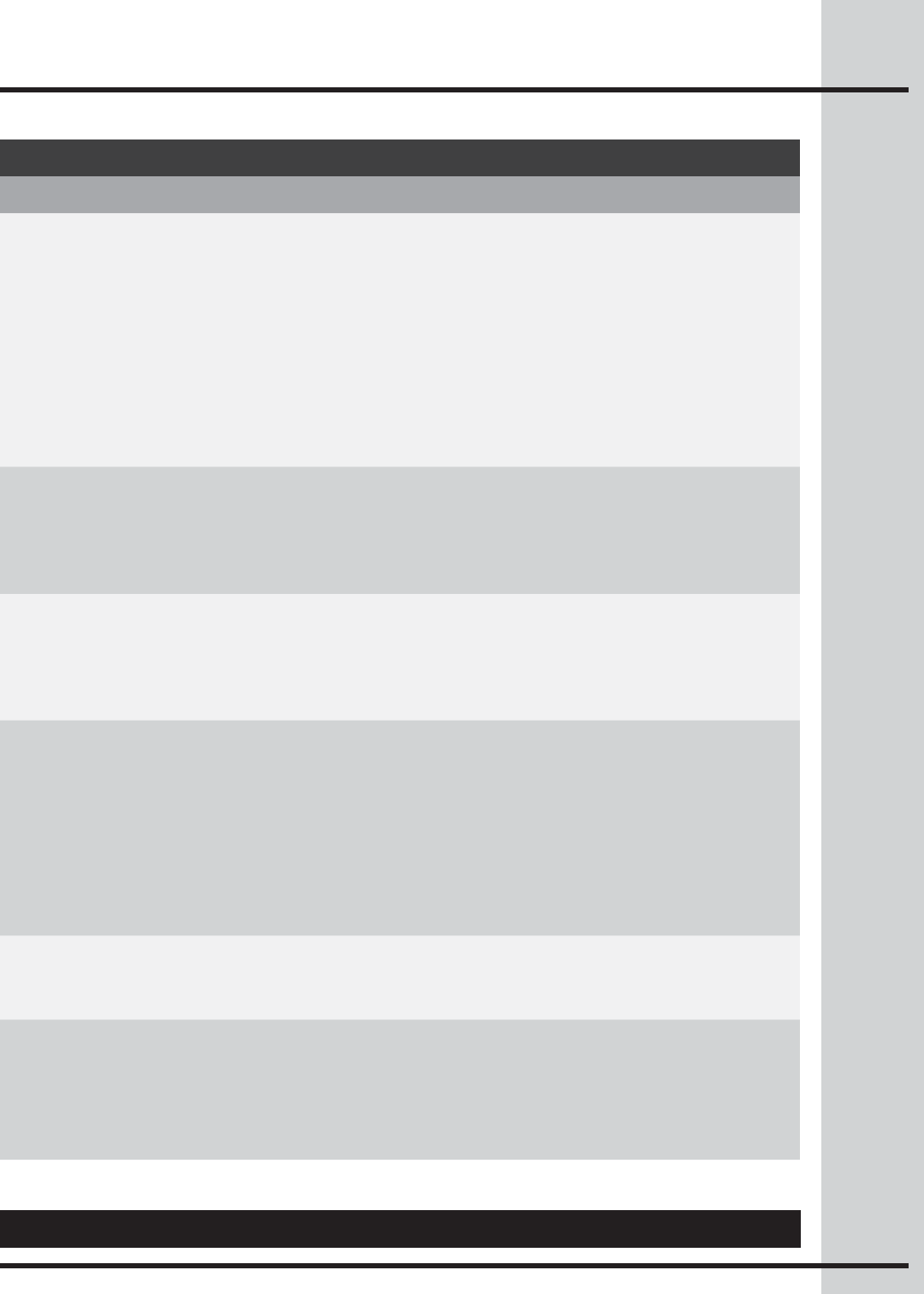
45
Solutions to common problems
Questions or for service call: 1-877-4ELECTROLUX (1-877-435-3287)
Before you call
Problem Solution
Oven smoke
excessively
during broiling
• Meat too close to the broiler element. Reposition the rack to provide more
clearance between the meat and the broiler. Preheat broil element for quick
searing operation.
• Meat not properly prepared. Remove excess fat from meat. Cut remaining fatty
edges to prevent curling, but do not cut into the lean.
• Grid on broiler pan wrong side-up. Grease does not drain into broiler pan. Always
place the grid on the broiler pan with the ribs up and the slots down to allow grease
to drip into the pan.
• Broiler pan used without grid or grid cover with aluminum foil. DO NOT use the
broiler pan without the grid or cover the grid with aluminum foil.
• Oven needs to be cleaned. Grease has built up on oven surfaces. Regular
cleaning is necessary when broiling frequently. Grease or food spatters cause
excessive smoking.
Soil not
completely
removed after
self-cleaning
cycle is
completed
• Failure to clean bottom, from top of oven, frame of oven or door area outside
oven seal. These areas are not in the self-cleaning area, but get hot enough
to burn on residue. Clean these areas before the self-cleaning cycle is started.
Burned on residue can be cleaned with a stiff nylon brush and water or a nylon
scrubber. Be careful not to damage the oven gasket.
• Excessive spillovers in oven. Set the self-clean cycle for longer cleaning time.
Surface element
does not heat
• No power to appliance. Check/reset breaker or replace fuse. If the problem is a
circuit overload, or improper connection of the armored cable supplied with the
appliance, have this situation corrected by a qualifi ed electrician.
• Too low heat setting. Turn control to a slightly higher setting until element comes
on.
• Incorrect control is on. Be sure to use correct control for the element needed.
Surface element
too hot or not hot
enough
• Incorrect control setting. Raise or lower setting until proper amount of heat is
obtained. Dial markings are an indicator of relative heat settings and will vary
slightly.
• Lightweight or warped pans being used. Use only fl at, evenly balanced, medium
or heavyweight cookware.
• Voltage is incorrect. Be sure appliance is properly connected to the specifi ed
power source.
• Use only fl at bottom, evenly balanced, medium or heavyweight cookware. Pans
having a fl at bottom heat better than warped pans. Cookware material affects
heating. Heavy and medium weight pans heat evenly. Because lightweight pans
heat unevenly, foods may burn easily.
Food not heating
evenly
• Improper cookware. Select fl at-bottomed cookware of a proper size to fi t
element.
• Incorrect control setting. Raise or lower setting until proper amount of heat is
obtained.
Scratches or
abrasions on
ceramic glass
cooktop surface
• Coarse particles (such as salt or sand) are between cooktop and utensil. Be sure
cooktop surface and bottom of utensils are clean before use. Small scratches do
not affect cooking and will become less visible with use.
• Cleaning materials not recommended for glass ceramic cooktop have been
used. See Ceramic-Glass Cooktop section in this Owner’s Guide.
• Cookware with rough bottom has been used. Use fl at-bottomed, smooth
utensils. See Selecting Surface Cooking Utensils in this Owner’s Guide.




